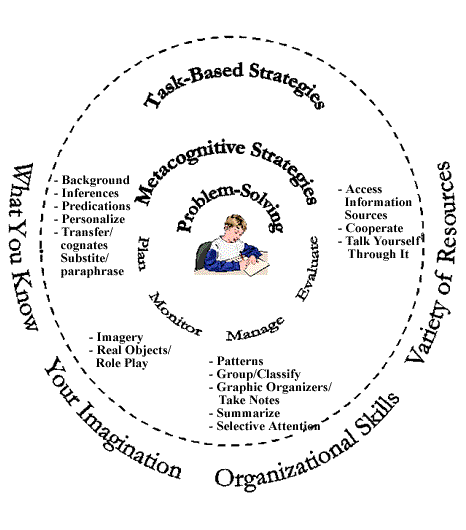We’ve
all heard about learning strategies and what to do to teach them to our
students. The problem which arises is how you can understand
this tough puzzle:

DIRECT STRATEGIES
o I. Memory
o II.Cognitive
o III. Compensation strategies

DIRECT STRATEGIES
o I. Memory
- Creating mental linkages
- Applying images and sounds
- Reviewing well
- Employing action
o II.Cognitive
- Practising
- Receiving and sending messages strategies
- Analysing and reasoning
- Creating structure for input and output
o III. Compensation strategies
- Guessing intelligently
- Overcoming limitations in speaking and writing
INDIRECT STRATEGIES
o I. Metacognitive Strategies
o I. Metacognitive Strategies
- Centering your learning
- Arranging and planning your learning
- Evaluating your learning
- Lowering your anxiety
- Encouraging yourself
- Taking your emotional temperature
- Asking questions
- Cooperating with others
- Empathising with others





